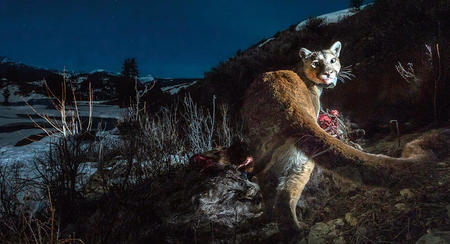Can you imagine meeting a cougar in your yard or hanging around your pool? Santa Monica (California), these cats are closer each day to the human populations in search of prey, deer, who are attracted to water sources and the lush vegetation of the residences.
The famous Hollywood sign that rises on Mount Lee in Los Angeles (USA), visited daily presence of thousands of tourists who pose for the cameras looking for the best picture to hang on your social networks. But they are not the only ones who walk by. A study published in PLoS ONE reveals that the pumas(Puma concolor) hunt near human settlements of Los Angeles, one of the only large cities inhabited these predatory cats .
Females are the ones that come closest, reaching be less than two kilometers from human settlements.
The authors, researchers from the University of California, conducted field observations and technology used GPS collars to track 26 pumas surrounding mountains of Santa Monica, near Los Angeles.
Although the results show that both males and females tend to hunt near human populations, females are those that come closest, reaching be less than two kilometers. Males, however, prefer totake advantage of the deer that live near streams and rivers of forests.
The authors suggest that females choose to hunt in more developed as part of a strategy to avoid encounters with aggressive males areas.
After their prey
The choice of hunting grounds reflects areas where prey are more abundant. The main prey of mountain lions , mule deer (Odocoileus hemionus) is attracted by the water fountains and lush vegetation, as well as pools and gardens cultivated in human populations.
This approach Deer cities causes the pumas go in search and enter populations.
The authors suggest that the hunting patterns of these felines reflect the balance between an aversion to areas of human settlement and an attraction to take advantage of these rich environments.
Understand how their big cats to the development of human populations help, according to research, planning strategies for the conservation of this species.











